BMW today presented the long-awaited R 1300 GS, the ‘next level GS’ that, according to the Germans, is ready in every respect to extend its leading position in the ultimate touring enduro segment.
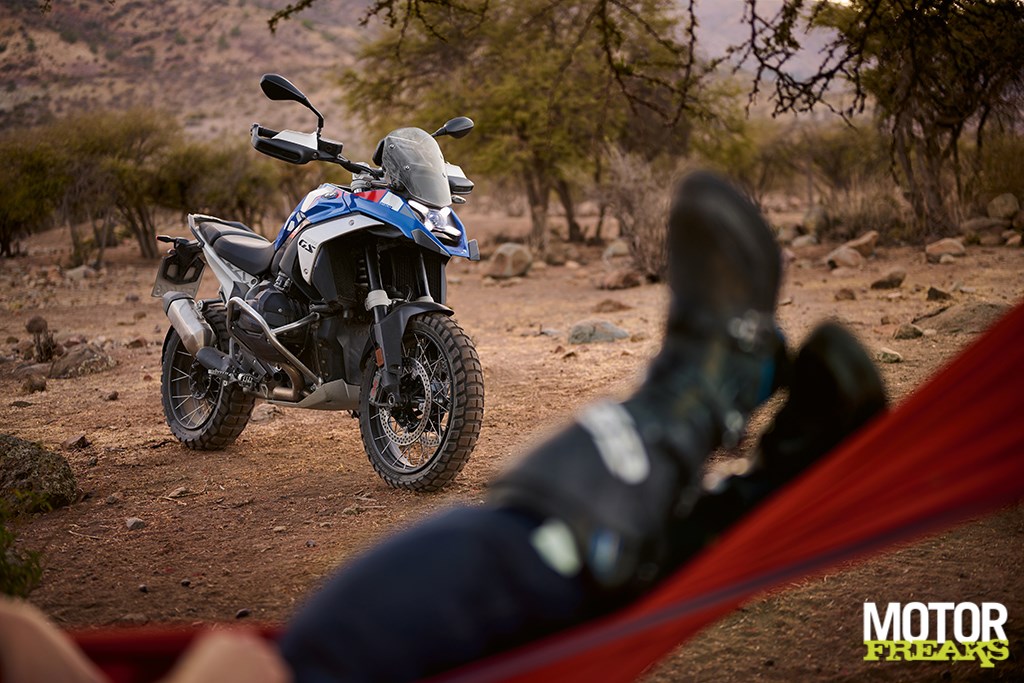
A new boxer engine with more cylinder capacity (1,300cc exactly), now good for a top power of 145 hp and an insanely powerful torque of 149 Nm, a weight reduction of no less than 12 kilos compared to the R 1250 GS and significantly more advanced electronics with now the first radar front and rear for adaptive cruise control and blind spot recognition, among other things, that is the completely new R 1300 GS in a nutshell.
“With the new BMW R 1300 GS we will once again surprise the competition. It is characterized by an even broader approach to product substance, while the reduction in complexity and weight, combined with targeted equipment, makes it possible to capture the essence of the boxer GS even further. to express itself more. With a new engine, exceptional steering characteristics and impressive driving qualities, it sets the standard, on and off-road.”
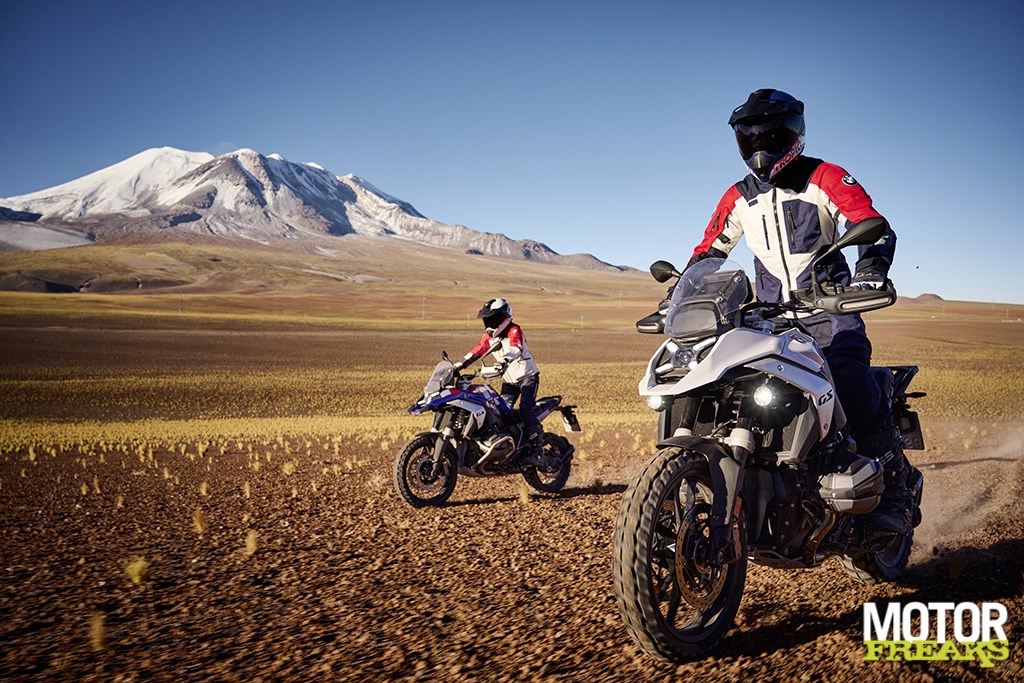
The beating heart of the new GS is a completely new boxer engine, about which, remarkably, BMW Motorrad provides very little information, except that the engine is more compact because the gearbox is now placed under the engine and thanks to a newly developed camshaft drive, but about the how and what is not told. From a displacement of exactly 1,300 cc, the new boxer delivers a power of 145 hp at 7,750 rpm and a torque of 149 Nm at 6,500 rpm, making it the most powerful BMW boxer engine ever in series production.
BMW Motorrad also keeps a close eye on the bicycle part. “In the bicycle section, the frame constructed from sheet steel plays the leading role with a significantly increased mounting space for components and with greater stiffness compared to the previous GS frame,” according to the press release.
There is talk of a subframe that is now made of cast aluminum (steel tubular frame on the current GS), a new EVO Telelever front suspension and a revised EVO Paralever rear suspension, which must have contributed to the increased steering precision and driving stability. Once again, however, not a word is said about the how and what.
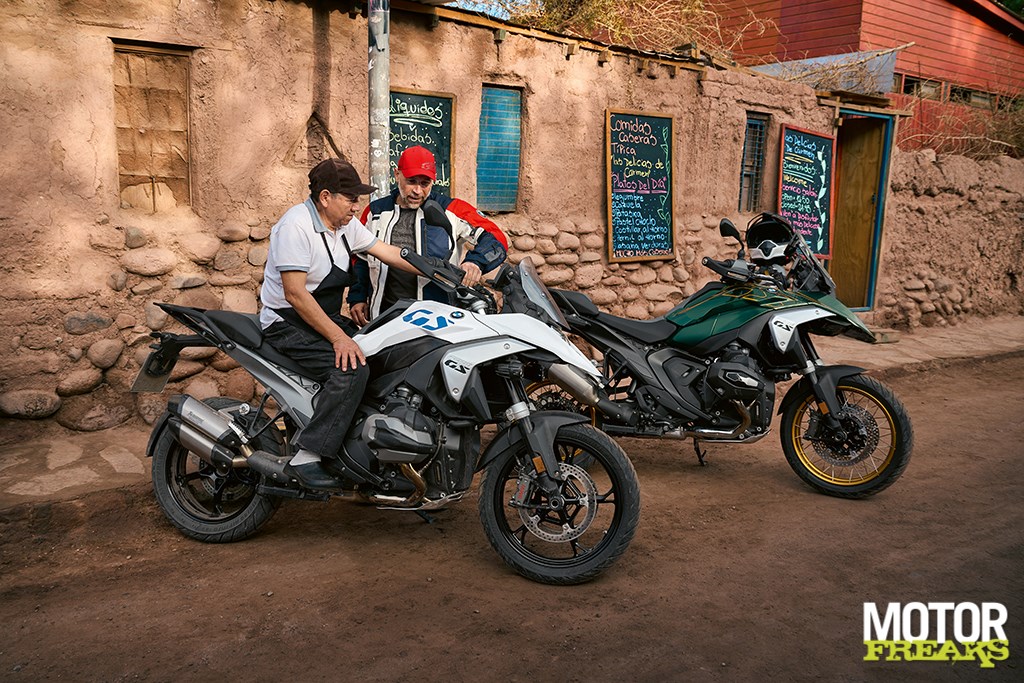
As far as the suspension is concerned, the R 1300 GS can optionally be fitted with the new electronic DSA (Dynamic Suspension Adjustmen) from the factory, which goes one step further than the Dynamic ESA Next Generation suspension, by adjusting the damping at the front and rear at the same time. suspension travel – depending on the selected driving mode, conditions and maneuvers. The automatic suspension adjustment also provides load compensation. Whether riding solo, as a couple or with a lot of luggage, DSA guarantees an even higher degree of safety, performance and comfort.
In addition to DSA, BMW has come up with two options for the R 1300 GS, only in combination with DSA: adaptive height control and a sports mode. The adaptive height control automatically adjusts the ride height depending on the driving conditions, so that the greatest possible comfort is guaranteed without compromising driving dynamics. The sport mode increases the front and rear suspension travel by 20 mm. This option has been specifically developed for off-road use.
The new BMW R 1300 GS gives you the choice of four driving modes as standard. The ‘Rain’ and ‘Road’ modes known from the previous model and the efficient-oriented riding mode ‘Eco’ have been supplemented with the new ‘Enduro’ mode. This mode features an off-road setup for better handling on unpaved surfaces.
Dynamic Traction Control (DTC), engine drag control (MSR), Dynamic Brake Assist (DBC) and Hill Start Control (HSC) are standard, and the Driving Modes Pro with additional driving modes can be added as an option. Additional money must also be put on the table for the Riding Assistant, the front and rear radar that controls the Active Cruise Control (ACC), Front Collision Warning (FCW) and Lane Change Warning (LCW).
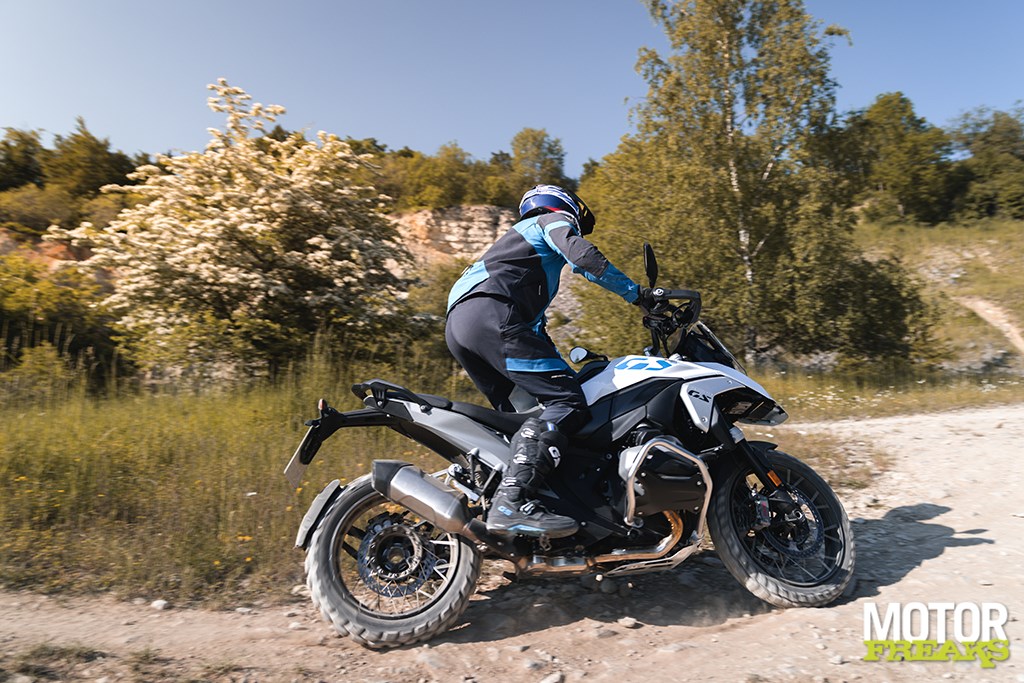
We can’t imagine it, but if it doesn’t mean anything to you: adaptive cruise control keeps the (adjustable) distance to the vehicle in front constant, Front Collision Warning is a braking function developed to prevent collisions and Lane Change Warning is the blind spot detection in both mirrors.
Then the design. BMW Motorrad says it has based the completely new design on the traditional GS ‘flyline’, but with an extremely compact appearance and a significant weight reduction of 12 kilos, as mentioned. The flatter top of the tank must have made the flyline very dynamic, light and accessible. Following the central cover over the aluminum tank, the saddle of the R 1300 GS offers a distinctive enduro-style silhouette. The tank cover is made of the same upholstery as the saddle.
The most striking detail of the new R 1300 GS is the very small full LED headlight with a striking light icon. According to BMW Motorrad, this should illuminate the road with unprecedented clarity, making you more noticeable in traffic. The headlight contains two LED units for low and high beam plus another four LED units for daytime running lights and side lights. The LED turn signals integrated into the handguards are innovative. With the optional Headlight Pro equipment, the LED headlight moves along the bend for optimal illumination of the road.
The basic version of the R 1300 GS is finished in Light White unicoat, and there are also the style variants Triple Black, GS Trophy and Option 719 Tranmuntana. Prices from € 23,250 incl. VAT and BMP, knowing BMW Motorrad, several thousand euros can be added including all option packages. Something tells us that soon there will be few people who will be able to buy them at the BMW Motorrad dealer for less than R30.

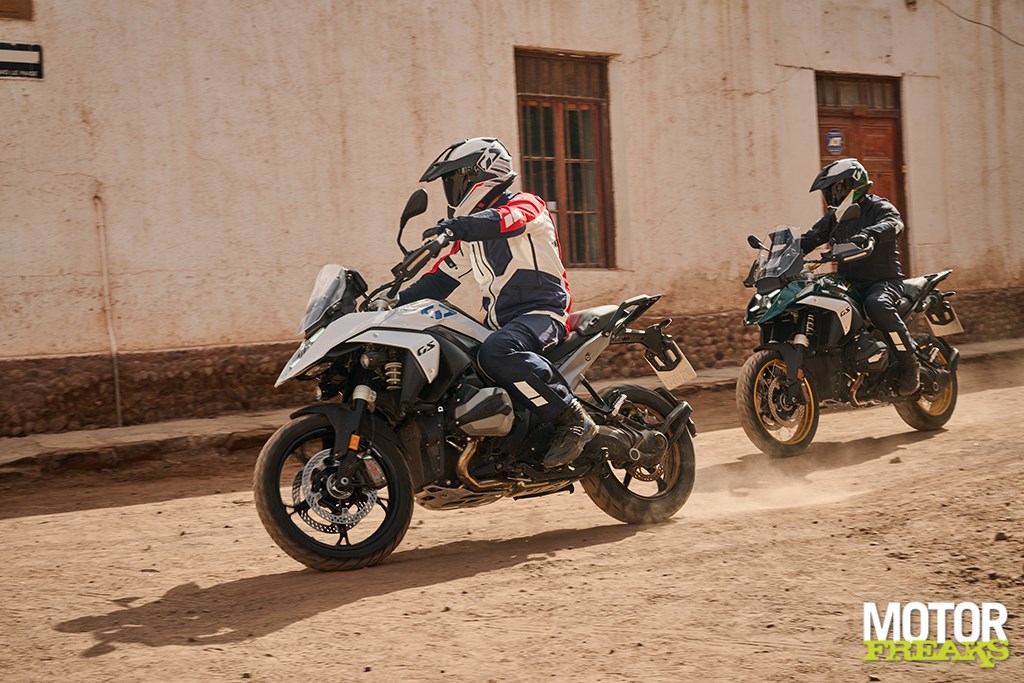
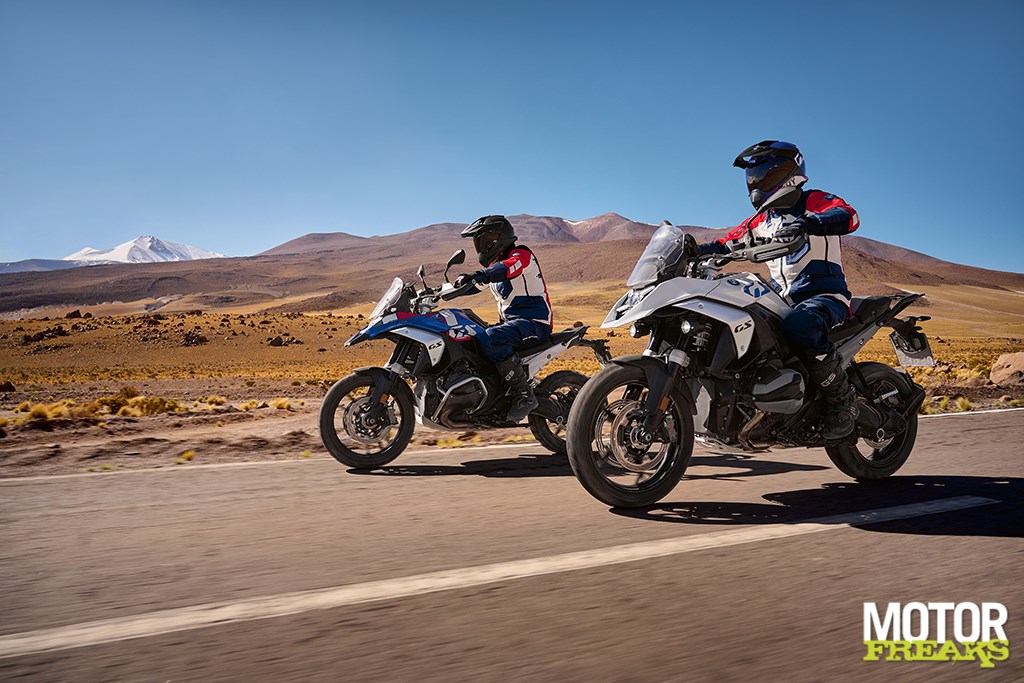
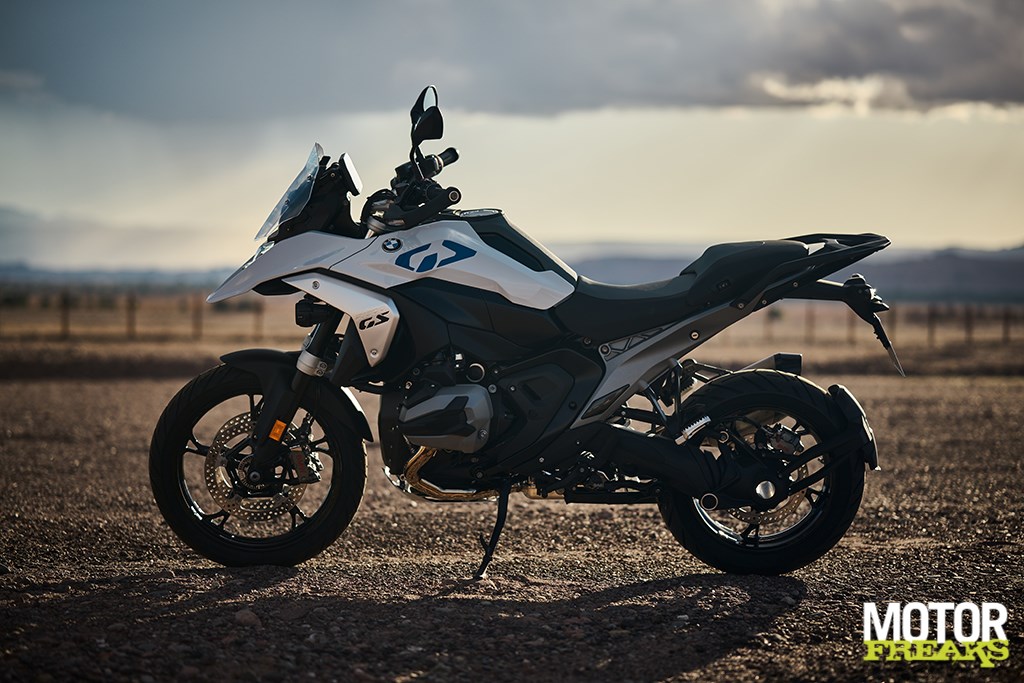

– Thanks for information from Motorfreaks.